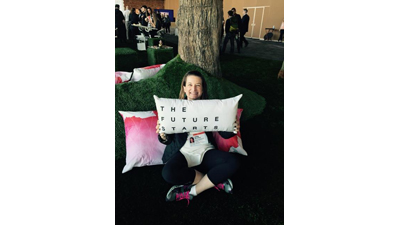I have just spent five days at the TED Dream 2016 Conference being moved to tears by the passion and efforts of people who honor the beauty of all humankind and who are fighting, hard, to make the world a better place. I am a UCLA Associate Professor and run the Transplant Research and Education Center to help more people learn about and consider donating kidneys to one another. This is my first big TED conference and I didn’t give a talk. I was only able to attend thanks to the kindness of a kidney patient and benefactor who sponsored all my costs. She and I teamed up to see what I could learn that could help me, along with many others, solve the kidney donor shortage.
Transplantation is a field of light. Whenever I am tired or frustrated by daily stresses, I only have to remember that, on this same day, many people have chosen to donate a part of their body to someone else at one of the 250 transplant centers around the country. It’s humbling. Over 15,000 kidneys from people who have died and people who are still living were donated to kidney patients in the United States last year.
After getting a new kidney, patients tell me about the new levels of energy they have and how their life starts returning to normal. They tell me that they are happy to pee again! They tell me about the next trip they plan to take, free from the worry about where the nearest dialysis center is located. They feel hopeful again. Most of them will live 7-14 years longer than if they stayed on dialysis. They will contribute in unmeasurable ways to their families and society.
I live in this space of light every day and it keeps me hopeful. As I say regularly, kidney transplantation is the best of humanity and the best of medicine. But, when I talk about the possibility of solving the kidney donor shortage at TED by increasing the number of people who donate kidneys while they are alive, people commonly say, “That’s a hard sell.”
After listening to a lot of people this week, I think the biggest barrier to solving the kidney donor shortage is that people who haven’t thought a lot about kidney donation before do not first see the light, as I do. What they see is surgery, pain, a scar, and potential surgical or medical risks. Sometimes people grab their back when I talk to them, protecting the kidneys that they don’t want to give me. I have to reassure them that donating a kidney is not right for everyone and the transplant community does not want anyone to donate who does not feel right in doing so.
I can actually tell who the potential living donors are pretty easily. After talking about what I am up to, there are really only three types of people who I meet. The first group says, “I would never go through a surgery I didn’t need to donate an organ. It isn’t my truth.” The second group says, “If my core family or friends needed a kidney, I would be willing to consider it. But, that’s it.” The third group says, “Donating a kidney makes sense to me. I would have to learn more, but we all need to help others and this is a profound thing to do to help our shared humanity.”
Which one are you?
This week at TED, I heard people talking about how they are working to end poverty for one billion people and solve climate change so that the entire island of Tahiti doesn’t sink. There are only 100,000 people waiting for a kidney in the United States today. This TED quest is small. Simply put, if we could find enough people who either loved someone who needed a kidney, or deep in the marrow of their being, felt that helping to solve this societal need was a true expression of themselves, we could solve the kidney donor shortage. It’s actually not a Hard Ask at all. It’s a Heart Ask.
You can learn more about live donor transplantation at Exploretransplant.org.

